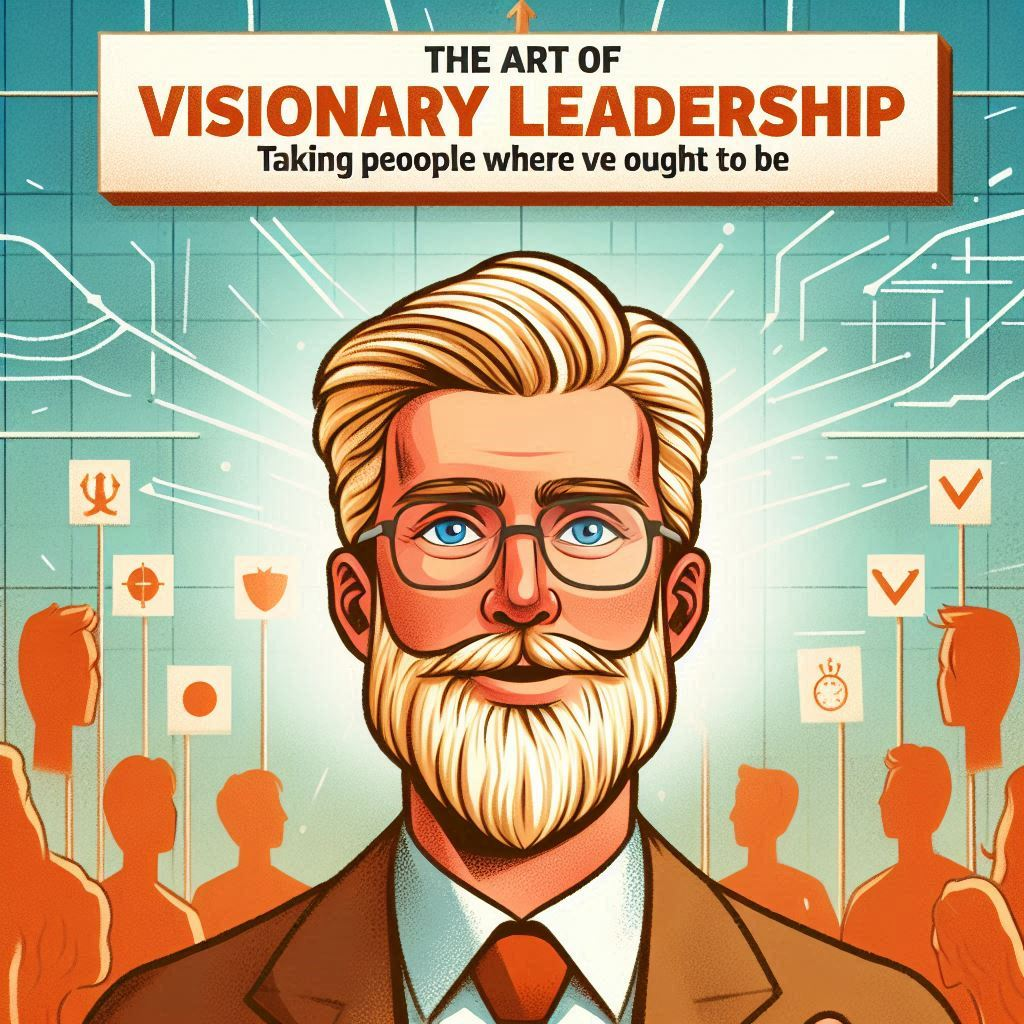
Leadership. It’s a word that gets tossed around more often than a hot potato at a juggling convention. But what does it really mean to be a leader? Is it about being the loudest voice in the room, the one with the fanciest title, or perhaps the person with the most impressive collection of motivational posters?
Well, according to Rosalynn Carter, it’s about something far more profound. In her wisdom, she states: “A leader takes people where they want to go. A great leader takes people where they don’t necessarily want to go, but ought to be.” Let’s unpack this nugget of leadership gold and explore what it means to be not just a leader, but a great leader. Buckle up, folks – we’re about to embark on a journey that might just change the way you think about leadership forever.
The Comfort Zone: Where Dreams Go to Take a Nap

First, let’s talk about where people “want to go.” Spoiler alert: it’s usually not very far from where they already are. Humans, by nature, are creatures of habit. We like our routines, our comfortable chairs, and our favorite mugs. The idea of venturing into the unknown? That’s about as appealing as a root canal performed by a blindfolded dentist.
But here’s the kicker: growth doesn’t happen in the comfort zone. It happens when we’re challenged, when we’re pushed to our limits, and when we’re forced to confront our fears. A leader who only takes people where they want to go is like a tour guide who never leaves the gift shop. Sure, it’s safe and familiar, but you’re missing out on all the good stuff.
The Vision Thing: Seeing Beyond the Horizon
So what sets a great leader apart? It’s the ability to see beyond the immediate horizon. It’s about having a vision that extends past the next quarter, the next year, or even the next decade. Great leaders are like human telescopes, able to spot opportunities and challenges long before they become apparent to everyone else. But having a vision is only half the battle. The real challenge lies in communicating that vision in a way that inspires and motivates others. It’s about painting a picture so vivid and compelling that people can’t help but want to be a part of it, even if it means stepping out of their comfort zones.
Think of it this way: If Christopher Columbus had only taken his crew where they wanted to go, they’d have probably ended up at the local tavern. Instead, he painted a picture of new lands, untold riches, and the promise of adventure. Was it scary? Absolutely. Did everyone buy into it right away? Probably not. But that’s what great leadership is all about – inspiring people to reach for something greater than themselves.
The Balancing Act: Pushing Without Shoving
Now, before you start thinking that great leadership is all about being a pushy know-it-all, let’s pump the brakes for a moment. There’s a fine line between inspiring people to greatness and being that overbearing boss who makes everyone want to hide in the supply closet.
Great leaders understand that change and growth can be uncomfortable. They don’t ignore the fears and reservations of their team. Instead, they acknowledge them, address them, and then show why the potential rewards outweigh the risks.
It’s like being a parent teaching a child to ride a bike. You don’t just shove them down a hill and yell, “Good luck!” You start with training wheels, you hold the back of the seat, you encourage them through the wobbles and falls. And when they finally take off on their own? That’s when the magic happens.
The Trust Factor: Building the Foundation

Here’s a truth bomb for you: People won’t follow you to places unknown unless they trust you. And trust isn’t something you can demand or buy – it’s something you have to earn, day by day, decision by decision. Great leaders build trust through consistency, transparency, and integrity. They’re the first to admit when they’ve made a mistake and the last to take credit for a team’s success. They create an environment where it’s safe to take risks, where failure is seen as a learning opportunity rather than a career-ending disaster.
Think of trust as the invisible bridge between where your team is and where they need to be. Without it, even the most inspiring vision will fall flat. With it, your team will be willing to follow you through fire (metaphorically speaking, of course – let’s not get carried away here).
The Learning Curve: Embracing the Climb
One of the key aspects of taking people where they “ought to be” is fostering a culture of continuous learning and growth. Great leaders understand that in today’s fast-paced world, standing still is essentially moving backward. This means creating opportunities for skill development, encouraging curiosity, and sometimes even pushing people into roles or projects that stretch their abilities. It’s about helping your team members discover capabilities they didn’t even know they had.
Remember, every expert was once a beginner. Your job as a leader is to create an environment where beginners feel empowered to become experts, where questions are encouraged, and where “I don’t know” is followed by “but I’m excited to find out.”
The Resistance: Dealing with the Naysayers
Let’s face it: Not everyone is going to be thrilled about leaving their comfort zone. There will always be resistance to change, no matter how positive or necessary it might be. As a leader, how you handle this resistance can make or break your success.
The key is to listen – really listen – to the concerns of your team. Sometimes, what sounds like resistance is actually valuable feedback. Other times, it’s fear of the unknown masquerading as practicality. Your job is to distinguish between the two and address each appropriately.
Remember, bringing people along on a journey of growth and change isn’t about steamrolling over objections. It’s about understanding concerns, addressing them honestly, and then helping people see how the proposed changes align with their own goals and values.
The Motivation Factor: Finding the ‘Why’
Here’s a little secret: People are much more likely to follow you into uncharted territory if they understand why it’s important. And no, “Because I said so” doesn’t count as a valid reason (sorry, parents everywhere). Great leaders are masters at connecting the dots between the current situation, the proposed changes, and the potential benefits – not just for the organization, but for the individuals involved. They tap into intrinsic motivation, helping people see how the journey aligns with their own values and aspirations.
It’s like the old story of the three bricklayers. When asked what they’re doing, the first says, “I’m laying bricks.” The second says, “I’m building a wall.” But the third says, “I’m creating a cathedral that will inspire people for generations.” Guess which one is more motivated? Your job as a leader is to help everyone see the cathedral.
The Courage to Lead: Standing Firm in the Face of Uncertainty

Let’s be real for a moment: Taking people where they “ought to be” isn’t always going to win you any popularity contests. There will be times when you have to make tough decisions, when you have to stand firm in the face of doubt and criticism. This is where true leadership courage comes into play. It’s about having the conviction to stay the course when things get tough, the humility to admit when you’re wrong, and the wisdom to know the difference.
Great leaders understand that their role isn’t to be liked by everyone – it’s to do what’s right for their team and organization in the long run. Sometimes, that means making unpopular decisions. But if you’ve built trust, communicated your vision clearly, and shown genuine care for your team, they’ll be more likely to follow you through the rough patches.
The Results: Measuring Success Beyond the Bottom Line
So how do you know if you’re succeeding as a great leader? Is it all about hitting targets, increasing profits, and climbing the corporate ladder? While these metrics certainly have their place, true leadership success goes beyond the balance sheet.
Look at the growth of your team members. Are they taking on new challenges with confidence? Have they developed skills they didn’t have before? Are they inspiring and mentoring others?
Consider the culture of your organization. Is there a sense of purpose and shared vision? Do people feel valued and heard? Is there a spirit of innovation and continuous improvement? And don’t forget about the impact on the wider community. Has your leadership led to positive changes beyond the walls of your organization?
These are the true measures of great leadership – the kind that takes people where they “ought to be.”
Conclusion: The Journey of a Lifetime
Leadership, as Rosalynn Carter so eloquently put it, is about more than just giving people what they want. It’s about having the vision to see what’s possible, the courage to pursue it, and the skill to bring others along on the journey. Being a great leader isn’t easy. It requires patience, perseverance, and a whole lot of personal growth. But the rewards – seeing your team achieve things they never thought possible, creating positive change in your organization and community – are immeasurable.
So, to all the leaders and aspiring leaders out there: Dream big. Push boundaries. Challenge the status quo. But most importantly, never forget that your greatest achievement isn’t in reaching the destination – it’s in helping others discover their own potential along the way.
After all, that’s where we all “ought to be” – continually growing, learning, and striving to be the best versions of ourselves. And that, dear readers, is what great leadership is all about.
